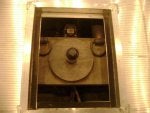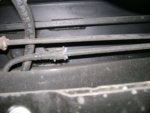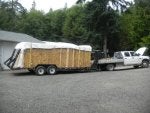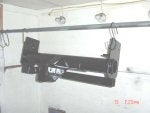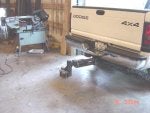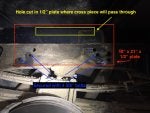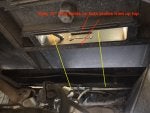I have a flatbed made by a local shop. They make hundreds of beds a year. Overall they seem really nice. This is my second one to own. Anyway yesterday I noticed the welds on two of the mounting brackets that hold the bed on had broke. They said bring it in next week and they would fix under warranty for no charge but I don't have time to do that as I am leaving town Monday so I am fixing that myself. While under there I got to looking at the gooseneck hitch setup. The welds all look decent but I am not sure if the design is adequate for what I intend to haul. I just bought a 32' gooseneck and will be loading it up to near 30k with the trailer weight and load combined. The truck is a 2016 diesel dually.
Attached are some pics. The place where the ball is mounted is three channels nested inside of each other and has very beefy welds on the top. Not really worried about it but it is welded to two 3" channels which are welded to two more 3" channels that tie in to the bed runners which are also 3" channel. Like I said the welds look good but it just seems like a not so good design but maybe I am wrong. I would like to reinforce things some but not seeing a real easy way to do it with the bed on the truck as there is not much room to work.
![]()
![]()
Attached are some pics. The place where the ball is mounted is three channels nested inside of each other and has very beefy welds on the top. Not really worried about it but it is welded to two 3" channels which are welded to two more 3" channels that tie in to the bed runners which are also 3" channel. Like I said the welds look good but it just seems like a not so good design but maybe I am wrong. I would like to reinforce things some but not seeing a real easy way to do it with the bed on the truck as there is not much room to work.






